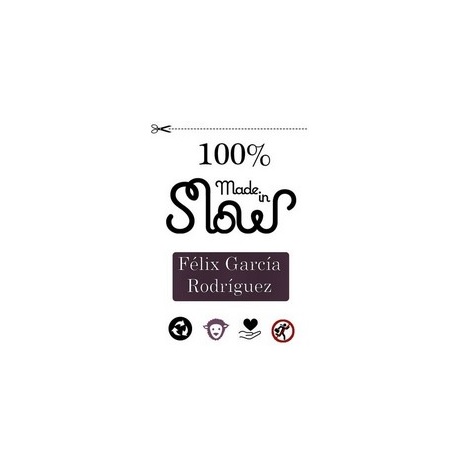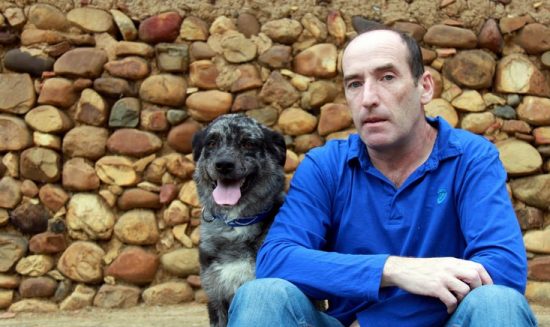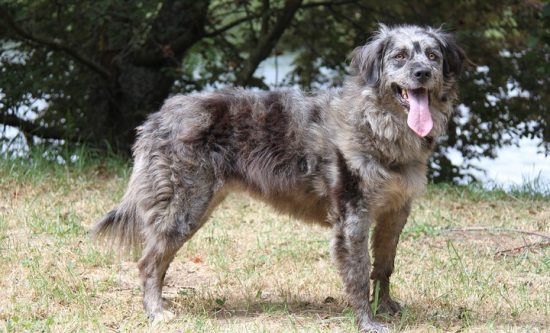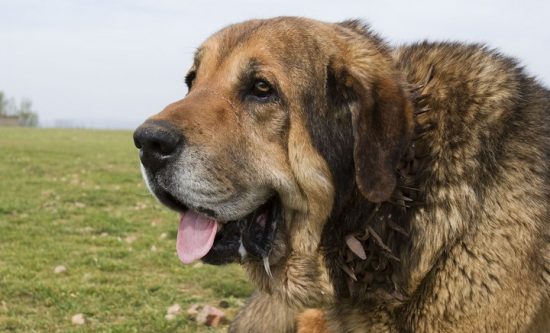
100% Made in Slow
Shepherd’s fellow is the dog; faithful and tireless protector of the flock. Especially within transhumant activity, their work is invaluable: running flock of sheep by trails, paths and meadows from the south to the green mountain pastures. Félix García Rodríguez has dedicated much of his time to those animals; the canine species in general are his passion, hobby and his profession to which he has devoted much of his life.
Félix García Rodríguez with his dog carea
 Félix García Rodríguez with his dog carea
Félix García Rodríguez with his dog careaToday, from Made in Slow, we want to present this great professional whose work has contributed to revalue the figure of the shepherd dog.
Well known is your work in recovering the autochthonous grazing races. What kind of resources have you relied in to promote them?
My professional career has involved raising, educating and training dogs for multiple purposes including, as I understand it must be to meet the secular tradition in this country that welcomes me, many Mastiffs and Leonese Careas.
As a result of this passion, I have been involved in the organization of the “cinofilia” in the province of Leon, launching decades ago the Canine Society of León, an organization that has developed the most canine activities in the province, paying special attention to our dog autochthonous breeds.
How did you contact the transhumance world?
As result of the effort by the dog autochthonous breeds I was soon captivated by the study of the cultural environment of “canis familiaris”, which becomes the flock of sheep and their protagonists: shepherds, sheeps, utensils, traditions and in general, the history of them.
Delving into canine behavior, I came to one of the great professionals and researcher of this species, Rafael Casado, with whom I have been fortunate to work for decades in many of its activities, including the training and guide dogs for film and commercial advertising.
As Judge of canine morphology, I have had the opportunity to act in several countries as ethologist. In addition I was able to helping hundreds of owners with their dogs and I collaborate to the University of León, attending subjects like Caniculture, Ethnology and Ethology, and I have given courses and lectures in other schools and veterinary schools, town halls and cultural and canine associations.
How do you see the current situation within the transhumance activity?
Transhumance, with flock of merino breed as the main exponent, is part of our history and cultural heritage and it can bring to all of us more wealth if we can leverage the resources that for centuries formed part of this activity: transhumance culture is an exceptional advantage nowadays.
Meat and wool are the main products provided by the flock, but also the Mastiffs, the Leonese Careas and even goats that usually accompany the flock of sheep, are exceptionally breeding and and can be a good source of income for farmers and shepherds. In addition, the flock itself, with all its elements, shepers at the head, are the best measure to preserve the environment and prevent forest fires.
Carea, shepherd dog
 Carea, shepherd dog
Carea, shepherd dogHow do you think the initiative promote “Transhumance by Made in Slow” may benefit this activity?
Made in Slow initiative can be an incentive for farmers and sheperds and a pride for all involved in the project. Recovering historical fame of spanish merino´s wool greatly benefit the country, the province, and the livestock sector.
From all work possibilities in the canine sphere, what are your next projects?
In this matter, I will continue working on the recovery of Leonese Carea as suitable dog breed for the pasturing and other useful tasks. Mastiffs and Leonese Careas are increasingly needed for maintenance extensive livestock.
I keep collecting documents and ethnographic material about dogs and cattle herding: in November will bring some more information about “carlancas” (dog defensive collar) and mastiffs in the Provincial Ethnographic Museum of León.
Mastiff dog with "carranca" (dog defensive collar)
 Mastiff dog with "carranca" (dog defensive collar)
Mastiff dog with "carranca" (dog defensive collar)
Bablofil
Thanks, great article.